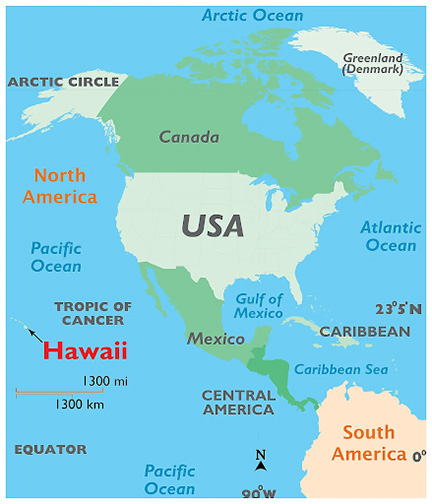Important Facts For Prelims
Kilauea Volcano: Hawaii
- 31 Aug 2021
- 2 min read
Why in News
Recently, a surge of earthquakes and the ground swelling at the southern part of the crater was noticed at Hawaii’s Kilauea volcano.
- A volcano is an opening on the surface that allows material warmer than its surroundings to escape from its interior.
Key Points
- About:
- Kilauea, also called Mount Kilauea (“Much Spreading” in Hawaiian), is located in Hawaii Volcanoes National Park on the southeastern part of the island of Hawaii, US.
- Kilauea’s slopes merge with those of the nearby volcano Mauna Loa on the west and north.
- It is an elongated dome built of lava eruptions from a central crater and from lines of craters extending along east and southwest rifts, or fissures. The volcano’s 4,090-foot summit has collapsed to form a caldera.
- A caldera is a depression created after a volcano partially collapses after releasing the majority of its magma chamber in an explosive eruption.
- Kilauea, also called Mount Kilauea (“Much Spreading” in Hawaiian), is located in Hawaii Volcanoes National Park on the southeastern part of the island of Hawaii, US.
- Eruptive history:
- The caldera was the site of nearly continuous activity during the 19th century and the early part of the 20th century.
- It is one of the world’s most active volcanoes, having erupted 34 times since 1952.
- From 1983 to 2018, it erupted almost continuously. In December 2020, It erupted at the crater, creating a lake with enough lava to fill 10 Hoover dams. That eruption ended in May 2021.
- Recently Erupted Volcanoes:
- Volcanoes in India:
- Barren Island, Andaman Islands (India's only active volcano)
- Narcondam, Andaman Islands
- Baratang, Andaman Islands
- Deccan Traps, Maharashtra
- Dhinodhar Hills, Gujarat
- Dhosi Hill, Haryana





